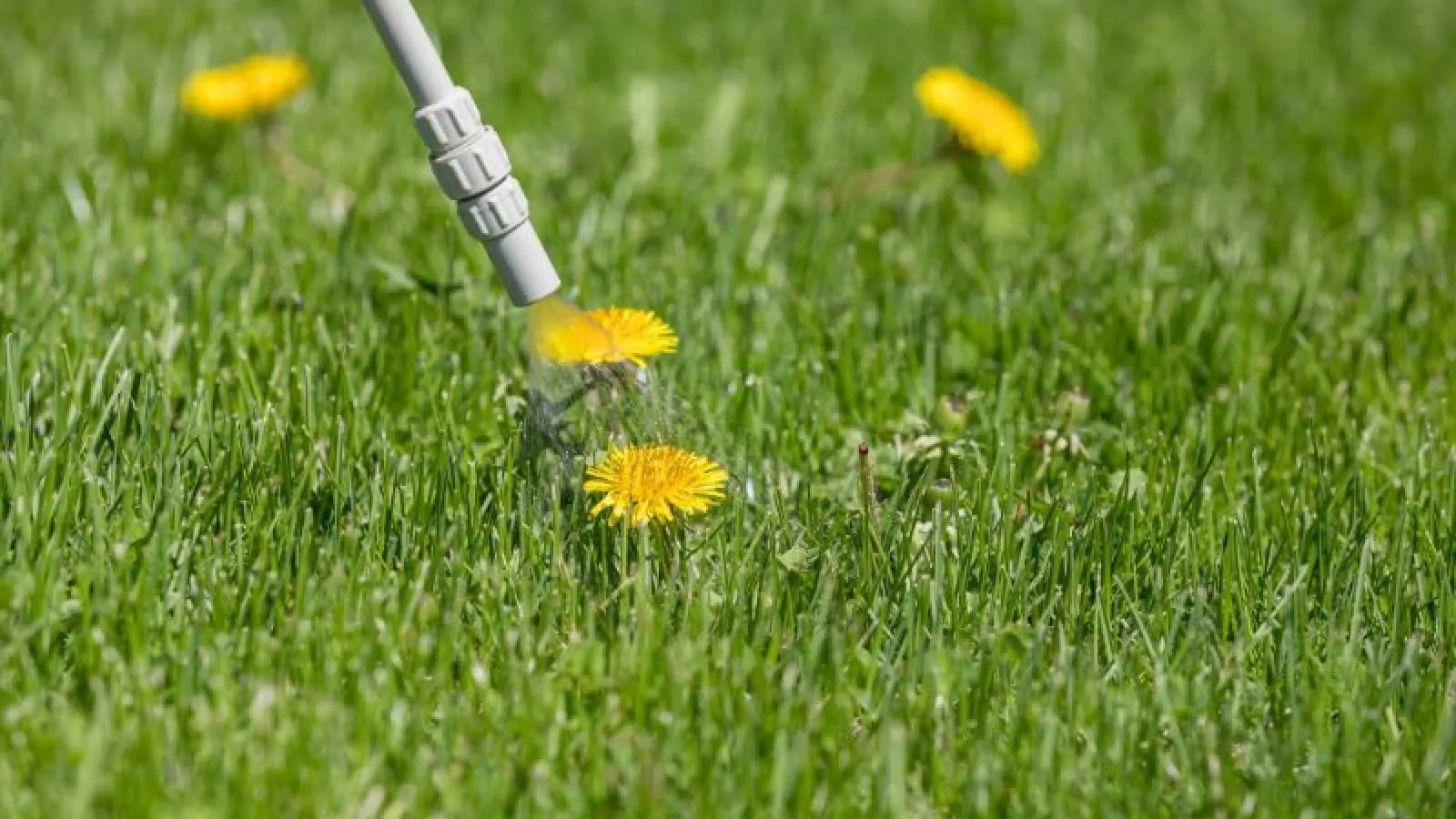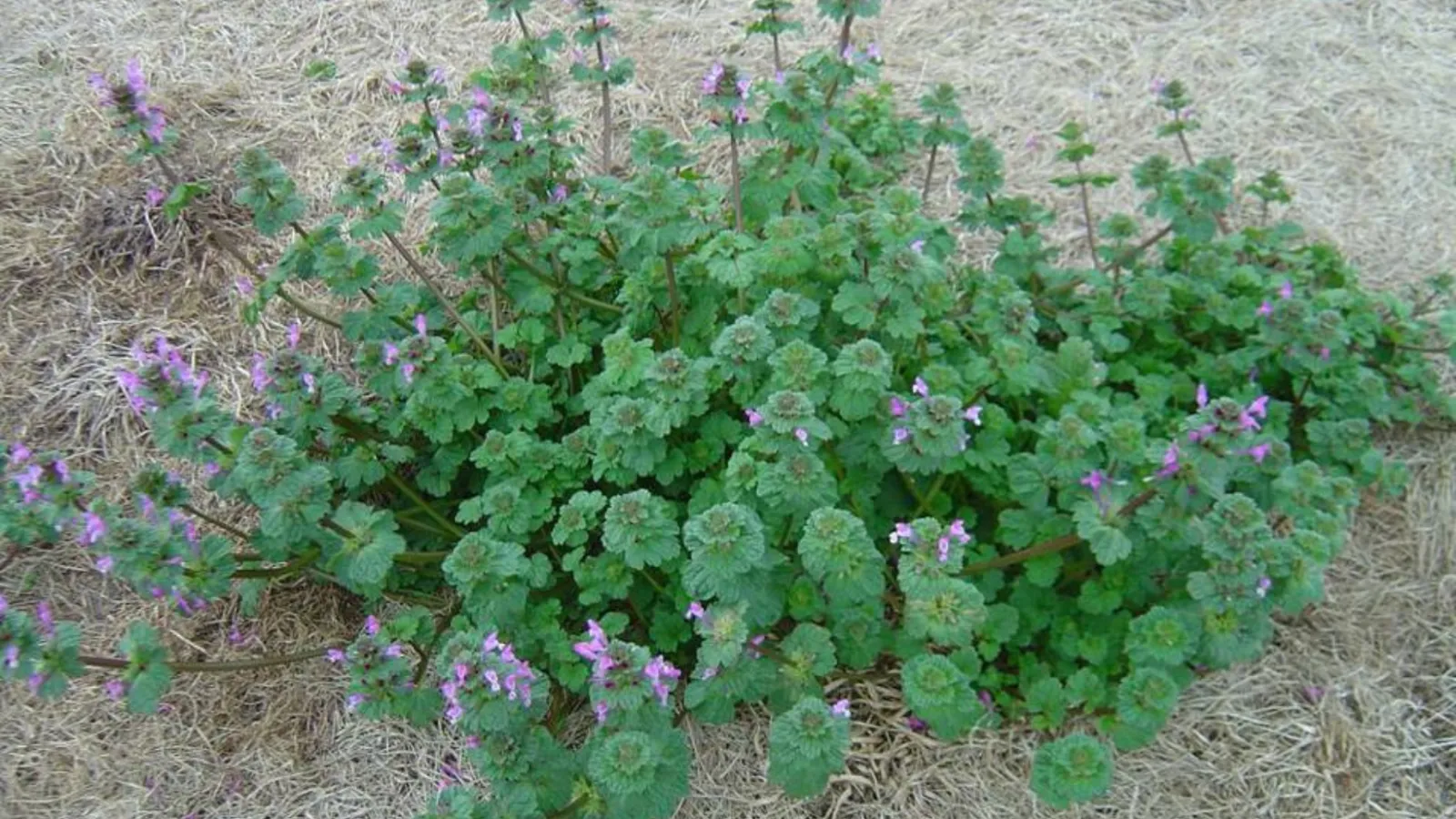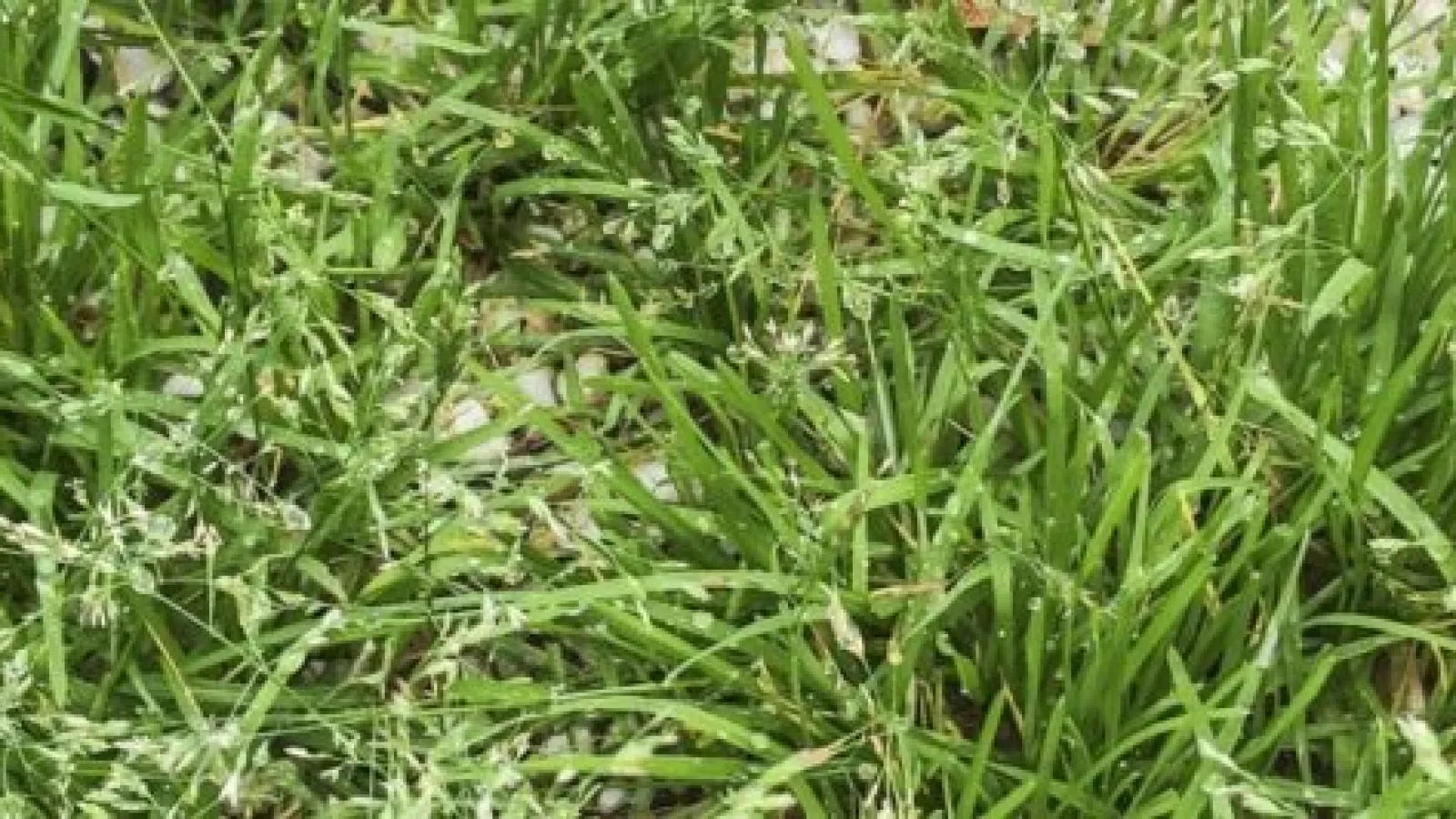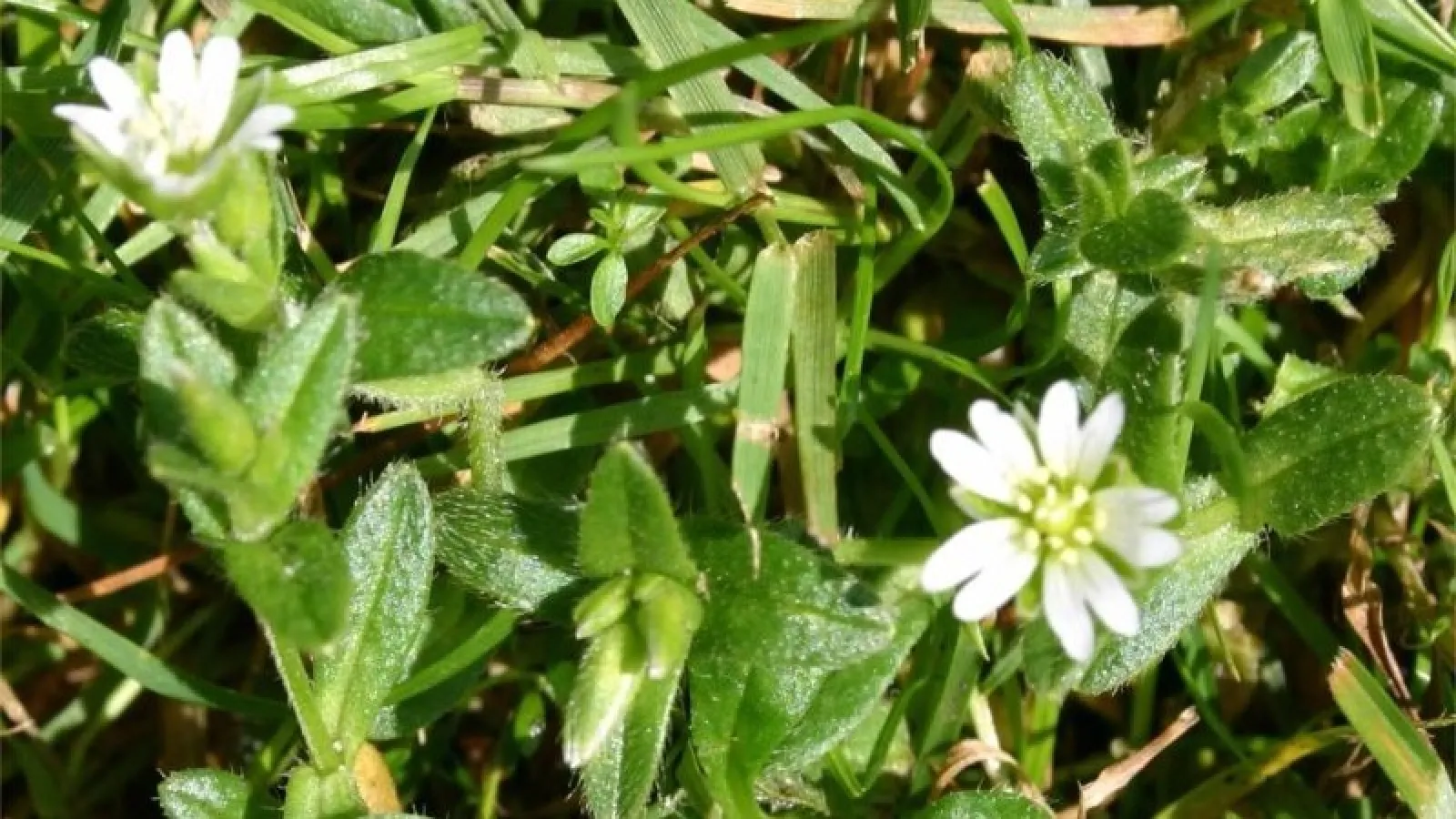
Winter Weeds
When the cooler weather of fall arrives and your warm-season turf is going into dormancy, winter weeds are just beginning to grow and become active. Mouse-ear chickweed and bittercress are common winter perennial broadleaf weeds that may invade your dormant lawn this fall and winter. Perennials are plants that establish deep roots and return year after year.
And did you know these winter weeds are edible? Read more below.
Mouse-ear Chickweed

Mouse-ear chickweed is a cool-season, low spreading perennial weed. It likes moist, compact soil. Though mouse-ear chickweed has shallow roots, it is drought tolerant making it a competitive weed in lawns. It can produce 10,000-15,000 seeds per plant.
This weed gets its name from its leaves. Mouse-ear chickweed has small leaves that look like green, hairy mouse ears. Its leaves are .75-1.5” long and the hairs give them a grey-green color.
Mouse-ear chickweed can easily be pulled by hand because of its shallow roots. But be sure to remove as much of the root as possible because it can re-sprout from a small piece left in the soil. Fall is the best time to treat for mouse-ear chickweed and other winter weeds because they are actively growing.
Hungry? Like common chickweed and white clover, mouse-ear chickweed is edible. It tastes similar to spinach when cooked and is loaded with vitamins.
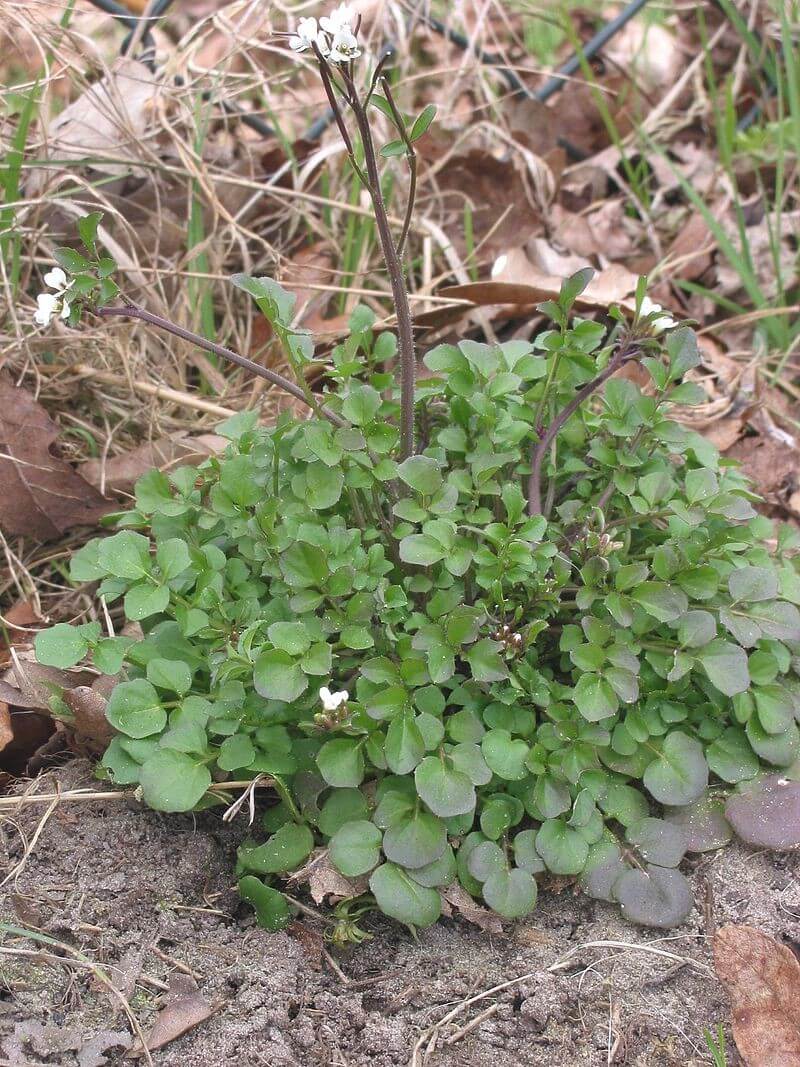
Bittercress
Bittercress appears in clumps as the weather cools and continues to grow and bloom through winter. After blooming, it leaves its seeds to be spread through the spring—making this weed return the next fall.
A member of the mustard family, bittercress leafs out in a basal rosette meaning the leaves form in a circle at the base of the stem. The flower stalks shoot up 3-9” above the rosette and have clusters of tiny, cross-shaped white flowers.
Many winter weeds, including bittercress, prefer cool, moist soil and is most apparent after early spring rains. Tiny white flowers develop at the ends of the stems and then turn into long seedpods. These pods split open explosively when ripe and fling seeds out into the environment. Control starts early in the season before the flowers turn to seed and have a chance to spread. Having a thick, dense turf will also help with prevention as bittercress likes thin or patchy areas.
Still hungry? Bittercress is edible too, though many people find the flowers and flower stalks less palatable than the leaves. It can be used in salads and even to make pesto.
Remember, a healthy, dense lawn is the best method for preventing winter weeds. Proper mowing height, appropriate watering and professional fertilization are the best defenses against weeds. For help on controlling mouse-ear chickweed, bittercress and other winter weeds, contact us for your free quote on professional lawn weed control and fertilization.
